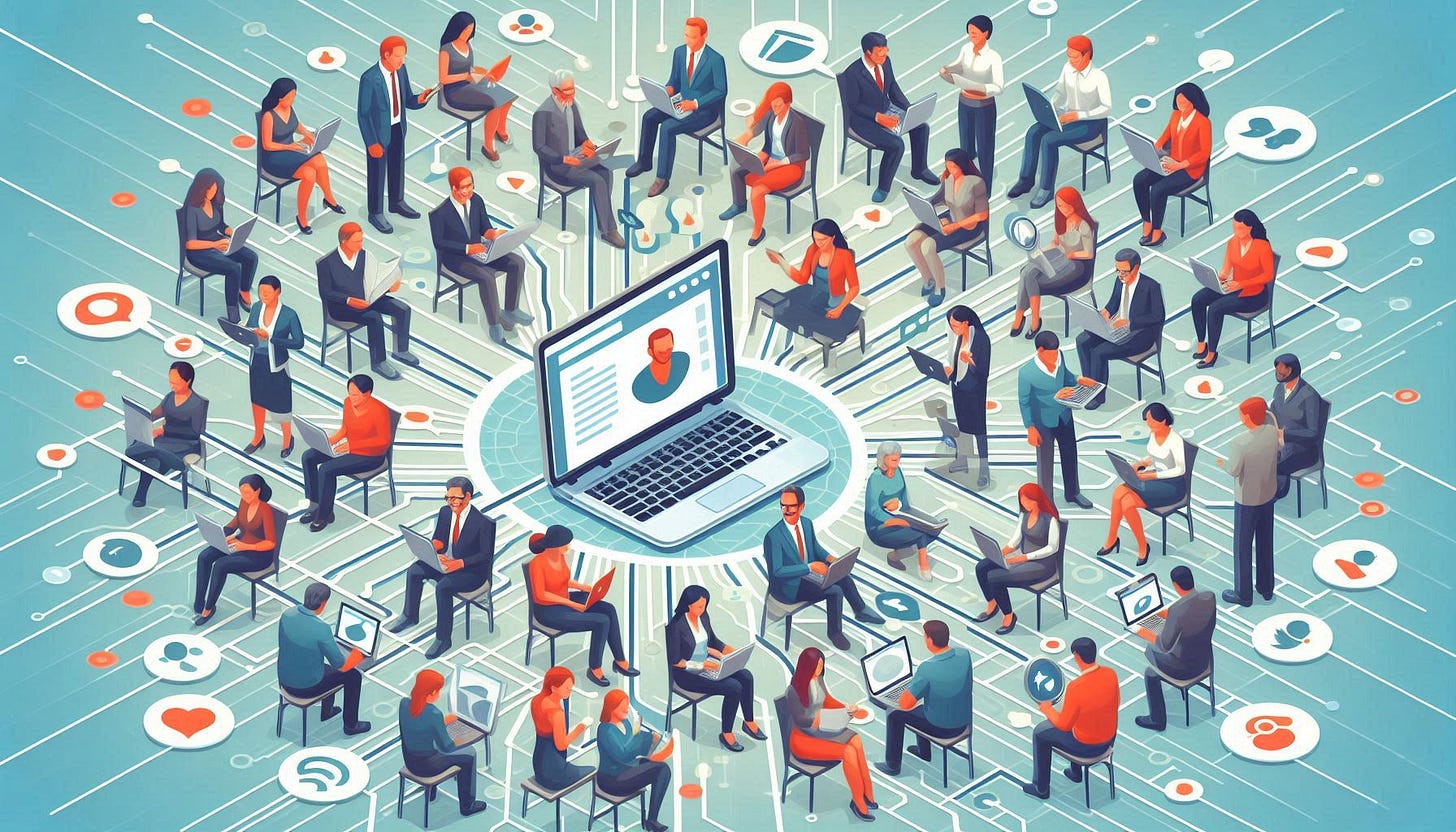The life (and death) of pre-event communities
What (many) years of event reporting taught me
I’ve spent years—no, decades—attending, covering, and dissecting events, including high-stakes media summits, political party conferences, industry expos, and niche networking gatherings. Call it what you will, I’ve been there.
Over the years I’ve seen events where the energy crackled before the bums met the seats (or the virtual tech was switched on)—where attendees arrived already knowing each other, conversations picked up mid-thread from online discussions, and business deals seemed to fall into place effortlessly.
I’ve also witnessed the opposite. Where attendees drifted aimlessly, unsure of who to talk to, where to go, or why they even bothered showing up. The difference? The strength (or failure) of the pre-event community.
Why do certain events start before they begin
The best events don’t begin when the first keynote speaker takes the stage. They start weeks—sometimes months—before in WhatsApp groups (and WhatsApp Channels—read our Substack about WhatsApp Channels here), LinkedIn threads, private Slack channels, and curated email exchanges. When done right, this pre-event community-building turns a gathering into a movement. Attendees arrive with purpose, familiarity, and investment in the event’s success.
Some of the strongest pre-event communities I’ve seen have:
- Dedicated spaces: Whether it’s a LinkedIn group, WhatsApp Channel, or a custom event app, attendees have a space to introduce themselves, share their goals, and connect before setting foot in the venue.
- Content that sparks conversations: Well-timed blog posts, Substack newsletters, teaser videos, and Q&A sessions with speakers get the energy, and synergy, going. Clever organisers start discussing key conference themes weeks before the event to warm up the conversation.
- Pre-event networking: AI-powered matchmaking, curated ‘meet your peers’ Zoom calls, or simply an active social media presence, successful events break the ice before the icebreaker session.
- Creating ownership: The best pre-event communities make attendees feel like insiders, co-creators, and contributors to the experience rather than passive ticket-holders.
When pre-event communities flop, events flop
I’ve walked into events where I knew, from the first awkward coffee break, that something was off. No one knew each other. People clung to their phones rather than networking. There was no shared energy.
Every time I’ve seen this, the warning signs were there in the weeks leading up to the event:
- The event organisers have been silent. There have been no pre-event emails, no online spaces, and no nudges to engage. There has been just a ticket confirmation and an invoice.
- No reason to engage beforehand: Attendees show up as strangers because they weren’t given a reason to connect beforehand. No exclusive content, no pre-event speaker interviews, no pre-event discussions, nothing to make them feel part of something bigger.
Building a pre-event community that works
Over the years, I’ve learned that building successful pre-event communities takes hard work. I’ve been writing content across many platforms for over 40 years now, and to this day it is the hardest to get pre-event content just spot on. Never think good event content happens by accident. Building pre-event communities demands a curated, nurtured, and deliberately designed narrative.
Here’s what I’ve seen work best:
- Decide what your key message is going to be, and stick with it: Even if it takes you a couple of weeks of interacting with the event organisers, sponsor, and other stakeholders, be sure you understand what your underlying message should be. Changing your messaging halfway through a pre-event community-building campaign confuses everyone.
- Start small, then scale: A WhatsApp group of 50 engaged attendees (or email list) is far better than a silent LinkedIn group with 5,000 dead bodies. Build momentum and expand gradually.
- Make it interactive: The best pre-event communities have a pulse. Live Q&As, polls, behind-the-scenes content—anything that gets people talking before the event itself.
- Give attendees a reason to show up invested: Send them an exclusive pre-event briefing or video interviews, or access to an online VIP discussion. This makes people feel like they gain something by engaging before they arrive at the event.
The future of pre-event communities? AI, personalisation, and always-on engagement
Yes, I’m a bit AI bezonked (read our “AI in European Media” Substach here) these days, but bear with me. With AI-driven networking tools, personalised event experiences, and hyper-targeted content strategies, the next wave of event communities won’t just exist—they’ll be smart, predictive, and continuously evolving.
Imagine an AI-powered event assistant that reminds you who to connect with based on your past interactions or a digital twin that helps you navigate key sessions based on your interests.
The best events won’t just have pre-event communities. They’ll have always-on communities—where connections start before the event and continue long after.
The worst mistake I have seen event organisers make is letting their pre-, and on-the-day event communities die a sudden death the moment their attendees walk out the door. Smart event organisers use event momentum to keep conversations, collaborations, and connections alive long after the final session. But that’s a topic for another Substack. Watch this space…


